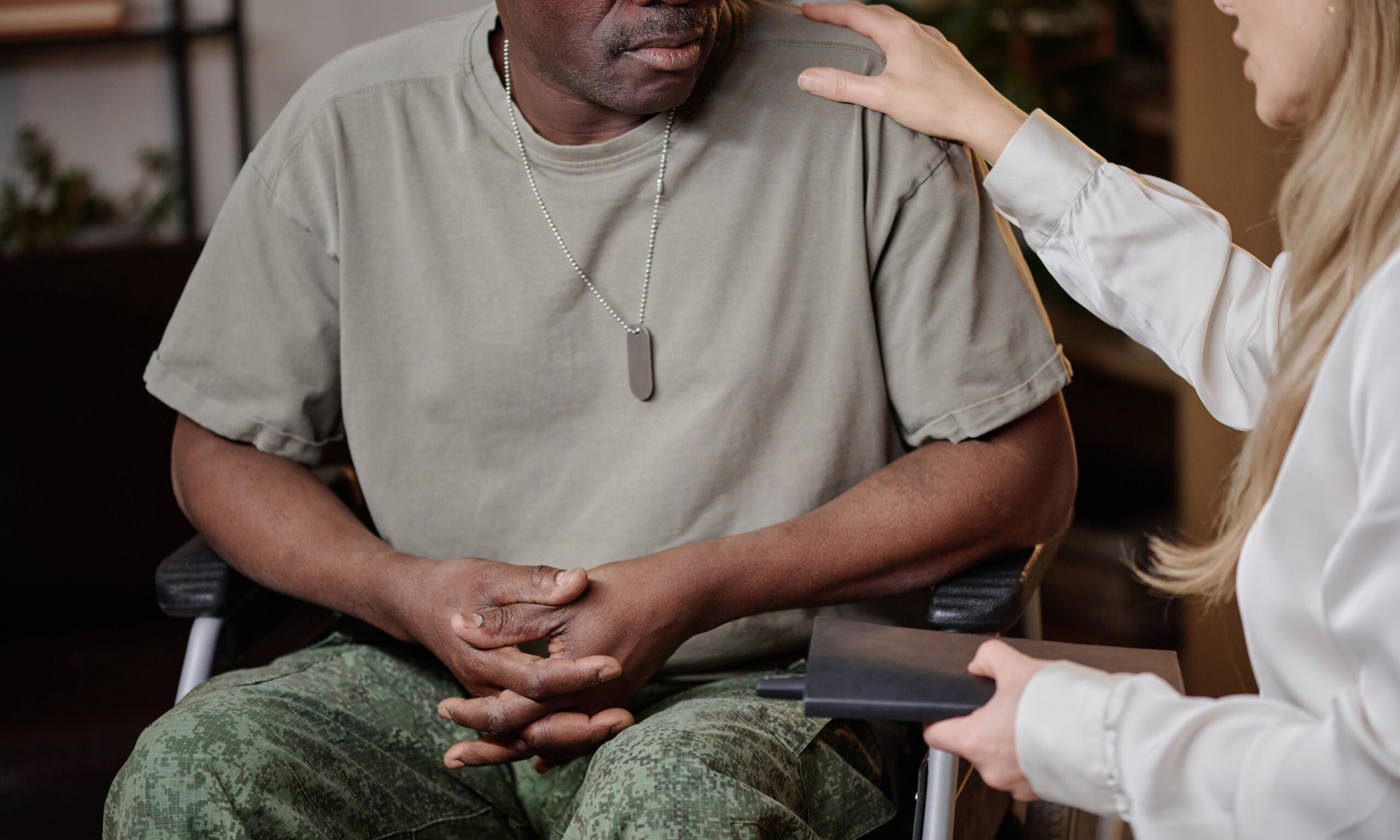Veterans often suffer from chronic pain for a variety of reasons. Managing this pain can be difficult, and some turn to prescription opioids for relief. However, there are several other non-opioid ways to treat and manage chronic pain long term.
Causes of Chronic Pain in Veterans
Chronic pain in veterans can be the result of injuries of various types, including blast injuries, traumatic brain injuries, amputations and more. It can also, however, be caused by the wear and tear on the body that comes from the constant physical demands of service. This wear and tear can lead to conditions like chronic back pain and joint degeneration.
Additionally, post traumatic stress disorder (PTSD) can cause physical symptoms including chronic pain.
Why Opioids Are Not the Answer
Veterans suffering from chronic pain are often prescribed opioids, but opioids only offer short-term relief and are highly addictive. Unfortunately, many veterans who are prescribed opioids develop substance use disorders. Additionally, some evidence shows that long-term opioid use can actually worsen the pain and cause other health conditions, like sleep disorders and immune system issues. Overdose is also a risk because it can occur even if opioids are taken as directed.
Chronic Pain Treatment Options
Fortunately, other treatments and management strategies can provide long-term relief from chronic pain.
Cognitive Behavioral Therapy (CBT)
Cognitive behavioral therapy (CBT) has emerged as a way to manage chronic pain in veterans. CBT helps you to deal with your pain emotionally, which can actually reduce your physical pain. For example, if you get anxiety because of the pain, that anxiety can make the pain worse. If you can reduce your anxiety, you can reduce your pain. In CBT you can also learn coping skills to manage the pain, such as relaxation techniques like meditation and breathing exercises.
Non-Opioid Pain Medicine
Some non-prescription medications can help with chronic pain, such as acetaminophen and ibuprofen. Other options include:
- Antidepressants which can help to manage nerve pain
- Anti-seizure medications can also help with nerve pain
- Muscle relaxers treat muscle spasms
- Nerve block injections
- Steroid injections to reduce inflammation
- Topical creams and patches to help numb certain areas
Physical Therapy
Physical therapy can help to manage pain by increasing flexibility, strengthening specific muscles, and improving joint mobility. PT includes stretching and massage to relieve muscle tension, and exercises that target specific muscles and joints. Your physical therapist can also make recommendations about exercises that you can do on your own and ways to improve your posture and movements.
Exercise
Often, certain types of pain become worse if you’re sedentary. Muscles and joints can become stiff if they are not exercised. Incorporating exercise into your regular routine can help to reduce your pain in both the short-term and long-term. It’s a good idea to work with a certified personal trainer who can advise you on the best types of exercise for you.
Yoga
Yoga can improve strength, flexibility and mobility by stretching muscles. It can also reduce stress, which can reduce physical pain and improve sleep, which allows your muscles and joints to get better rest.
Chiropractic Treatment
Chiropractic care may help in some cases. It involves spinal manipulation, exercise, and soft tissue therapy which can release muscle tension, restore nerve function, and increase mobility. It can even reduce inflammation which is often the cause pain. Treatments are tailored to your specific needs and the location of the pain.
Surgery
In extreme cases, surgery may be an option, depending on the cause of the pain, and its location. Surgery can be risky, but it may offer a long-term solution.
The VA’s Whole Health Model
The VA’s Whole Health model is an approach that puts veterans at the center of their own wellness path. Unlike traditional medicine that focuses mainly on treating disease or symptoms like pain, the model’s goal is to treat the whole person and to empower veterans to take an active role in their healthcare.
The Whole Health model integrates conventional medical treatments with alternative therapies including acupuncture, yoga, meditation, tai chi, and nutritional counseling. Veterans can also work with coaches to set goals and develop skills for managing stress, improving sleep, reducing chronic pain, and enhancing overall well-being. They are encouraged to explore all aspects of their health including physical, emotional, spiritual, and social health.
The model also emphasizes prevention and long-term wellness rather than just managing problems as they arise. The VA offers a Personal Health Planning tool, which can help veterans identify areas of their life and health that they’d like to improve and track their progress over time.
The model has shown success so far in reducing opioid use among veterans and increasing veteran engagement in their own health care. To learn more about the model and the program, you can visit any of the VA medical facilities across the country.
In Closing
As a veteran, you shouldn’t have to live with chronic pain. Understanding how to manage and treat your pain can help you live a pain-free, healthy life. At Health Service Alliance, we have the utmost respect for veterans and have specific health and mental health programs and services designed specifically for you. We are dedicated to providing compassionate, personalized, and accessible care regardless of your ability to pay. Reach out today to learn more.


